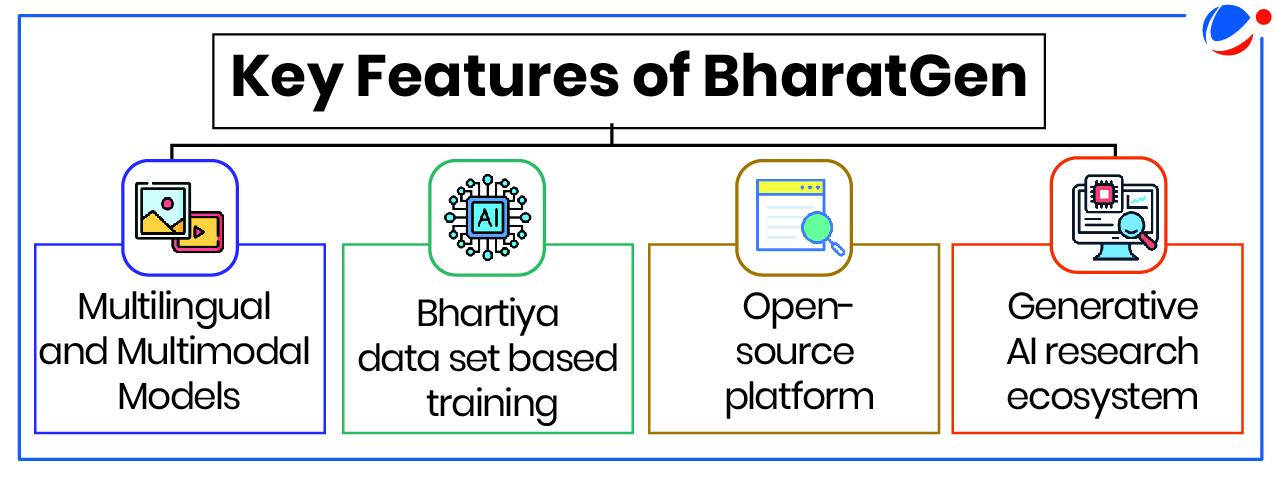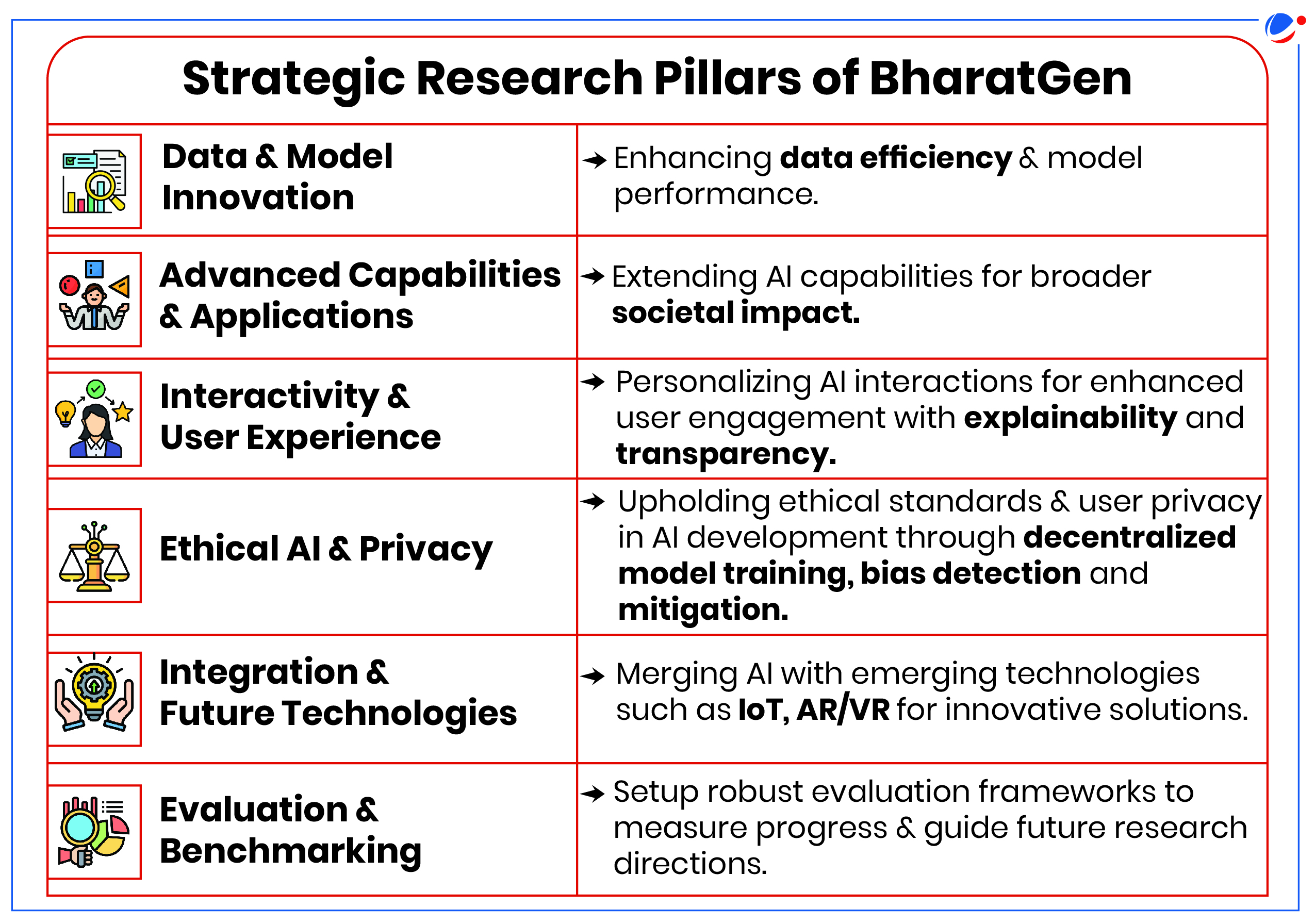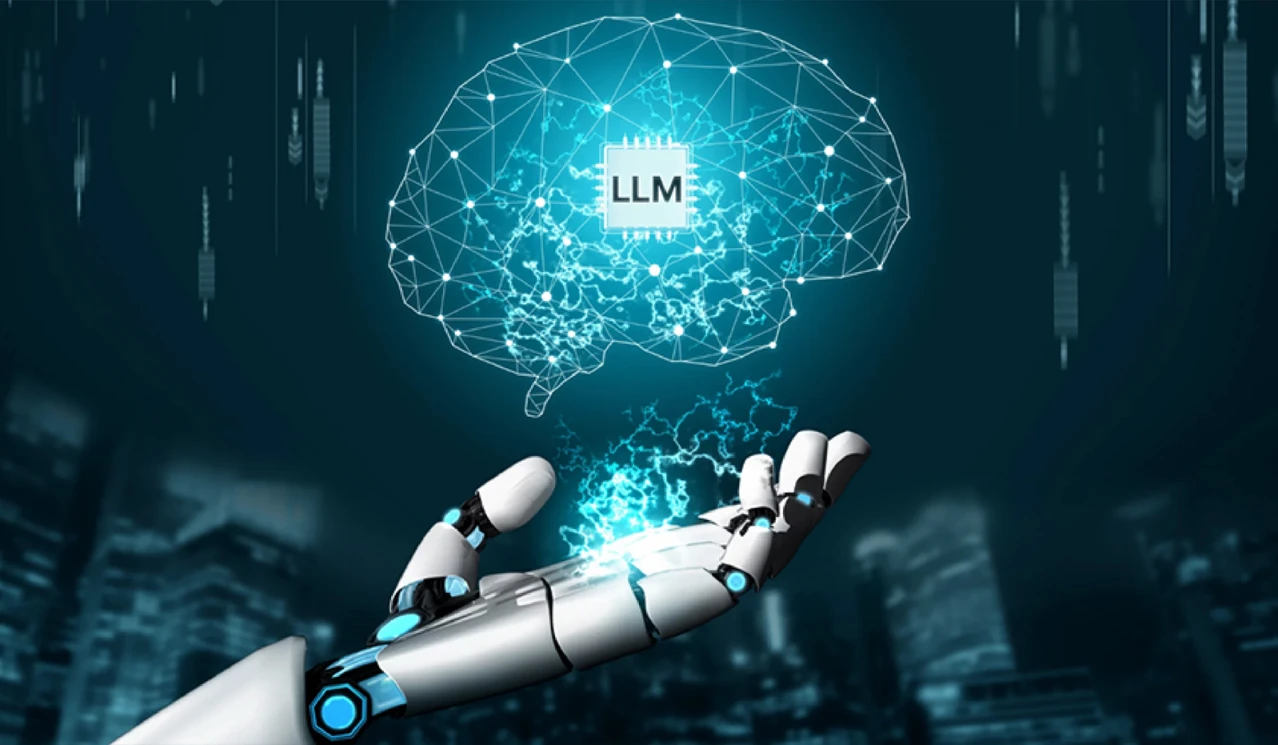Why in the News?
Ministry of Science and Technology launched BharatGen, a pioneering initiative in generative Artificial Intelligence (AI).
About BharatGen Programme

- BharatGen is a Multimodal Large Language Model (LLM) project focused on creating Generative AI systems that can generate high-quality text and multimodal content (audio and imagery) in various Indian languages.
- Aim and Purpose:
- To revolutionize public service delivery and boost citizen engagement through AI.
- Position India as a leader in the generative AI space.
- Crafting a path tailored to India's diverse linguistic, cultural, & societal fabric.
- Pushing AI technology boundaries & ensuring relevance to India's context & use cases.
- Implementing Agency: TIH Foundation for IOT and IOE (a Section-8 company (not-for-profit) by IIT Bombay) under the National Mission on Interdisciplinary Cyber-Physical Systems (NM-ICPS).
- Timeline: Project is expected to be completed in two years (July 2026).
- Bharat Data Sagar: A core part of BharatGen, it aims at establishing a vast repository of India-centric data that ensures the AI models are deeply rooted in the country's unique context.

National Mission on Interdisciplinary Cyber Physical Systems (NM-ICPS)
|
About Generative AI and Large Language Models (LLMs)
- Generative AI: Generative AI is AI that can create original content—such as text, images, video, audio or software code—in response to a user's prompt or request.
- Generative AI tools are built on underlying AI models, such as a Large Language Model (LLM), which is the foundation for text-based generative AI tools like ChatGPT.
- Generative AI relies on deep learning models - algorithms that simulate the learning and decision-making processes of the human brain.
- LLMs: LLMs are a category of foundation models (large AI models) capable of understanding and generating natural language and other types of content to perform a wide range of tasks.
- LLMs work by learning patterns from vast amounts of data and becoming capable of recognizing and interpreting human language.
- LLMs are typically based on a type of neural network called transformer architecture andconsist of multiple layers of neural networks and self-attention mechanisms that enable them to learn patterns.
Comparison Between Traditional AI and Generative AI | ||
Features | Traditional AI | Generative AI |
Key Focus | Analyzes data, performs specific tasks and automate decision making. | Creates new data (text, images, music etc.) |
Learning Approach | Explicit rules and algorithms | Data-driven learning (Neural Networks) |
Output | Structured outputs such as predictions, solutions or classifications | Entirely new content or creative outputs |
Adaptability | Require manual intervention and reprogramming | Automatically adjust and improve its performance over time |
Analogy | Master chef following a recipe | Innovative chef creating new dishes |
Applications | Accuracy, Efficiency, Reasoning | Creativity, Content Generation |
Significance of BharatGen Programme
- Government Backing: This initiative marks the world's first government-funded Multimodal Large Language Model (LLM) project focused on creating efficient and inclusive AI in Indian languages.
- AI as public good: BharatGen will deliver generative AI models and their applications as a public good by prioritizing India's socio-cultural and linguistic diversity.
- Inclusive AI: It strives to address India's broader needs such as social equity, cultural preservation, and linguistic diversity, while ensuring that generative AI reaches all segments of society.
- Aligns with the vision of Atmanirbhar Bharat: By creating foundational AI models, BharatGen aims to reduce reliance on foreign technologies and strengthen the domestic AI ecosystem.
Other initiatives to promote AI development in India
- IndiaAI Mission: A comprehensive national-level program to democratize and catalyze the AI innovation ecosystem.
- National AI Portal (INDIAai): A joint venture by MeitY, National e-Governance Division (NeGD) and NASSCOM.
- AI Research Analytics and Knowledge Dissemination Platform (AIRAWAT): for providing a common compute platform for AI research and knowledge assimilation.
- Global Partnership on Artificial Intelligence (GPAI): An international initiative to guide the responsible development and use of AI.
- India is a founding member.
- National AI Skilling Program: Enhancing AI skills through customized training modules with industry leaders.




